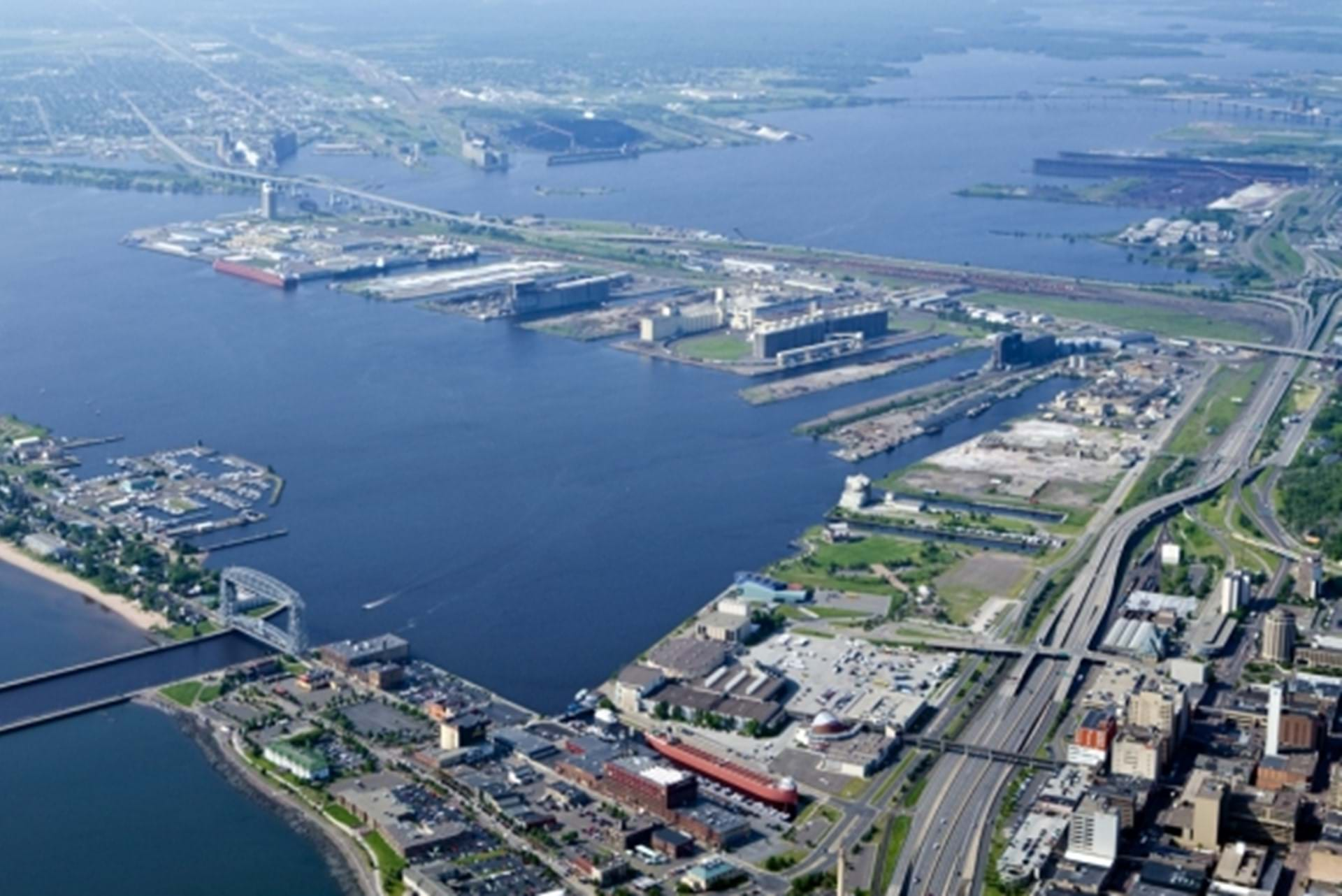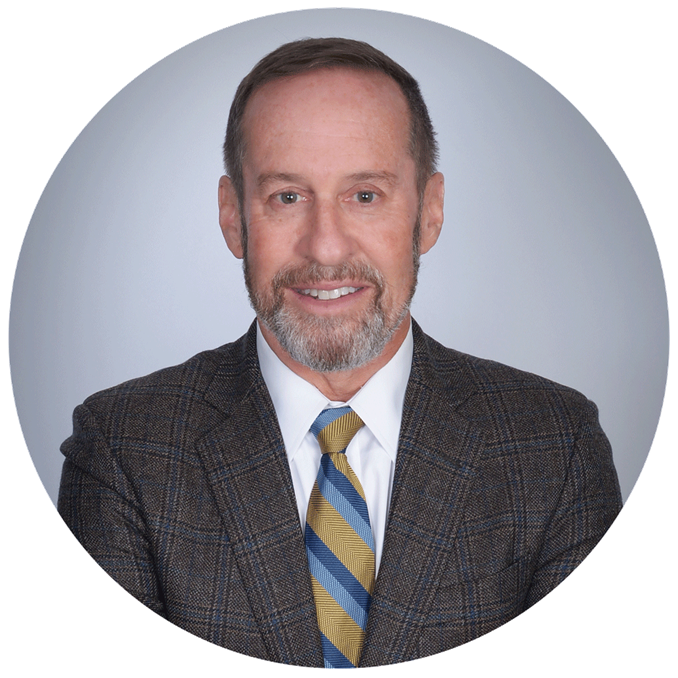
AGLPA's perspective on Green Marine's 15-year milestone
Q & AThe American Great Lakes Ports Association (AGLPA) has represented the interests of commercial ports and their users on the U.S. side of the Great Lakes since 1977. The AGLPA was among the initial association members involved in conceptualizing and later promoting Green Marine as a binational environmental certification program for the Great Lakes and St. Lawrence region 15 years ago. Executive Director Steve Fisher recently spoke with contributing writer Julie Gedeon about Green Marine’s beginnings, and current port challenges.
I realize it’s 15 years, but what do you recall from Green Marine’s earliest days?
Numerous meetings with representatives from seven trade/industry associations, including the Shipping Federation of Canada, SODES, the Canadian Shipowners Association, and, of course, the Chamber of Marine Commerce with Ray Johnston leading us in the discussions.
Back then, and I remind people of this even now, the public’s attitude toward the industry was hostile because of the aquatic invasive species issue. Some scientists claimed that a new species was being found in the Great Lakes or St. Lawrence every six months. A Milwaukee Journal Sentinel editorial called for the Seaway’s closure as the only way to protect the environment. Shortly after, a Detroit newspaper did so as well. This was alarming. We had to figure out as a group how to be proactive in terms of our industry’s environmental performance.
Was it relatively easy to bring everyone together?
We’d already been collaborating on infrastructure and regulatory issues. Our efforts to harmonize ballast water regulations was definitely one of those issues.
However, I believe Green Marine was the first time our industry had the notion to work together to get our own house in order.
None of us knew initially the degree to which people would be willing to act. I recall Ray telling everyone that our industry had to be proactive. Long involved in this industry, Ray had the stature to provide that leadership. I think if it had been someone else, we’d have people saying: you’re not going to tell me what to do. Even so, there were some who refused to get involved. Ray insisted we had to move forward with the hope they’d join later, which most did.
Has that changed how the industry collaborates?
Not always. There are definitely times when stakeholders have differing points of view, but we tend to cooperate to deal with a threat. For instance, when states wanted to regulate ship discharges beyond proposed federal regulations – and beyond available science – for ballast water standards, Ray from the CMC, Bruce Bowie from the Canadian Shipowners Association, George Robichon from Fednav and others accompanied me on state visits to explain why this was impossible for ship owners to manage. Fortunately, through our discussions in Washington, D.C., the U.S. Congress recognized that as interstate and international commerce, all shipping matters had to be regulated at the federal level or it would be chaos.
Another example is when the International Joint Commission threatened to impede commerce on the St. Lawrence River by increasing the water flows out of Lake Ontario to ease high lake levels and flooding. We pointed out that the Boundary Waters Treaty on which the IJC is supposed to base its decisions prioritizes navigation. It doesn’t even mention flooding.
Do you think other issues like that will arise in response to extreme weather events possibly related to climate change?
Not so much issues as opportunities. In the U.S., there’s more than $2 billion of port infrastructure funding available through federal grant programs. Another $3 billion is available for port electrification and emissions reduction.

The challenge is how to get this funding in a way that improves individual ports and the overall network.
Ports have to ask: How should we approach this from a planning perspective? What do we want to electrify? If we buy electric equipment, what do we need in terms of charging infrastructure? Can the local utility provide the necessary power? And it’s a scramble with the money only being offered for a few more years.
How has the AGLPA been helping ports to deal with all of this?
We’ve been facilitating meetings between ports and the various federal agencies administering the funds, and with consulting firms that can help with planning, applying for grants, and project engineering.
For instance, we recently had our port representatives in Washington, D.C., for a three-hour dinner with the head of the U.S. Maritime Administration – the agency overseeing the $2 billion in port infrastructure funds. It was a constructive way for our members to talk with the Administrator and her staff.
The next day, we had an hour-long meeting with staff from the Environmental Protection Agency, which is administering the $3 billion in funding for port electrification and emissions reduction. They related a lot of useful information for the grant applications, as well as who else at the EPA might be of additional help.
A trade organization can arrange those opportunities but it’s up to the individual ports to pursue the funding, planning and project’s execution in a strategic way.
That’s why we’ve also helped ports to get to know some of the different consulting firms available for these purposes – arranging a sort of meet and greet – to see what each can offer as expertise and experience.
How is the Buy American Act figuring into these projects?
There’s a lot of pressure to buy American, but some things just aren’t made in the U.S. Some coastal ports, for example, want to buy large cranes but they’re all made overseas. The American Association of Port Authorities has raised this issue in most every discussion with the Biden administration and federal agencies. We also raised this with the EPA because port representatives were asking whether electric forklifts or electric cargo trucks were even available in the U.S. The answer wasn’t clear. Waivers are occasionally issued by the Biden administration, but I don’t know how often it would be willing to do so. President Biden’s goal is to spend this money to stimulate the U.S. economy.
Isn’t the renewed emphasis on Buy American First contrary to the idea of a binational green shipping corridor in the St. Lawrence and Great Lakes?
Despite some political rhetoric, the United States is highly engaged in international trade, and that would be difficult to reverse. The Trump administration tried with tariffs.
It will be interesting to see how the discussions on a green shipping corridor evolve. Both governments made the announcement with no consultation with the carriers and ports that will have to implement this, catching a lot of us by surprise. It’s a fine idea, but I believe the governments are leaving it up to us how to structure and implement it. Again, this will take the kind of leadership we saw Ray assume at Green Marine’s start to negotiate with all the relationships and personalities involved.
It took two years to create Green Marine. We had to figure out the structure, governance, criteria, funding and other things. Maybe that’s what we have to do again for this corridor.
We should begin by defining what we mean by a green corridor. There are quite a number around the world already and each one has been approached differently. Maybe our first task should be to look at those corridors in existence to see what we can learn from them.
What would you like to see Green Marine focus upon in the future?
It’s not for me to say. While the associations were involved in Green Marine’s initial discussions, we turned it over to the participants to decide how to proceed more than 15 years ago. And I think Green Marine, led by David Bolduc and his team, has done a terrific job, as evidenced by the program’s expansion.
Of course, emissions reduction, which has been in the Green Marine program in some form from the outset is a bigger priority now given climate change, but with the U.S. providing large amounts of money, there’s almost no excuse for ports not to take action.
